Media | Articles
A 1903 Mercedes Simplex is Amelia 2024’s Oldest, Most Expensive, and Best Car
Between three auctions in Amelia Island this week, 354 collector vehicles were up for grabs. Forty-two of them were worth a million dollars or more, including a barely broken-in Bugatti Chiron Pur Sport (sold for $4,047,500) and a real-deal Ford GT40 Mk I (sold for $4,405,000). The most expensive, though, nearly by a factor of three, was a 121-year-old Mercedes Simplex 60 HP. It has peeling paint and weathered upholstery. It is finished in boring colors and its coachwork isn’t sporty. It has one-third the horsepower of a new Honda Civic and the fuel economy of a freight train. It sold for $12,105,000. What was the big deal?
With cars this old (older than the Wright Flyer, stainless steel, and the toaster in this case), factors like pop culture relevance or nostalgia just don’t come into play. Nobody ever had a Mercedes-Simplex poster on the wall or a Hot Wheels version on their bookshelf, nor did they drive one on PlayStation. Instead, desirability for such motorcars mainly boils down to originality, usability, history, and significance of the design. This car has a hell of a lot of all of that.
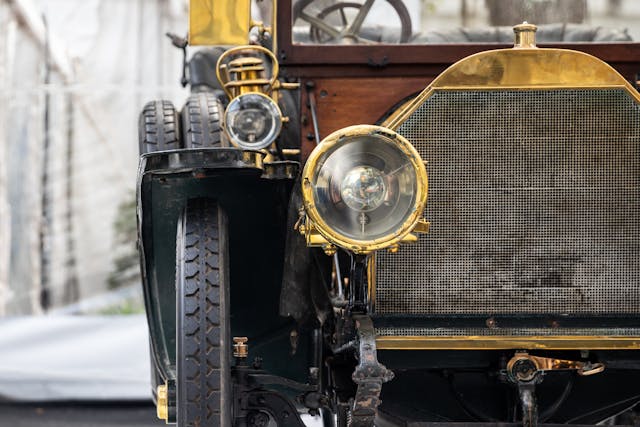
Back at the tail end of the nineteenth century, Daimler Motoren Gessellschaft (DMG) was building a series of cars called the Phoenix, which featured one of the world’s first four-cylinder engines. It was selling quite well in France, then the world’s largest market for these new horseless carriages. DMG’s official agent in the French Riviera was a fellow named Emil Jellinek, who also happened to be the Consul General of Austria-Hungary back when the Habsburgs still had a handle on things. Jellinek pushed hard for DMG to build faster and better designs for him to sell and the company, thanks to the talents of designer Wilhelm Maybach, responded with a model called the 35 HP in 1901. Jellinek also had a daughter named Mercédès, and he sold the new motorcars with her name attached. Eventually, he even changed his own name to Jellinek-Mercedes, “probably the first time that a father has taken his daughter’s name,” he said.
Although the famous three-pointed star logo didn’t adorn an automobile until 1910 and the brand we know as Mercedes-Benz didn’t hit the road until 1926, Mercedes cars were already a well-known entity in the 1900s thanks to the 35 HP, 40 HP, and 60 HP series. Because of the company’s priority on “comfort by means of simplicity” in their designs, the cars were known as “Mercedes Simplex” (not to be confused with Simplex Automobile Company, Simplex-Crane, Crane Simplex, or American Simplex, which were all US-based concerns).
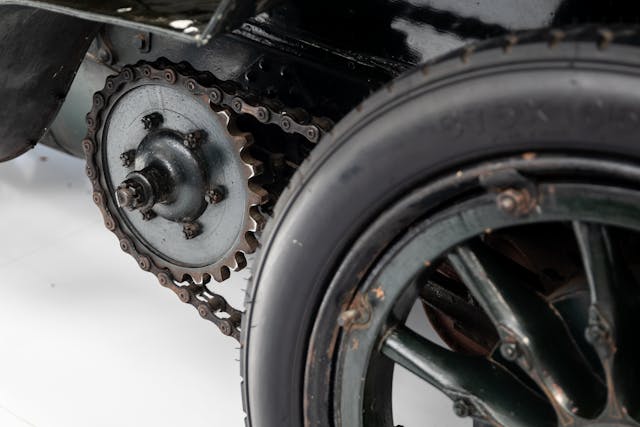
Among the Mercedes Simplex’s forward-thinking design elements were its honeycomb radiator, relatively low pressed-steel chassis and low-mounted engine with dual chain drive, scroll clutch, water-cooled drum brakes, and four-speed gearbox. From their first appearance at the 1901 Nice Race Week, the Mercedes Simplex became a favorite among well-heeled sporting gentleman of early 20th century Europe and America. It was fast, but also comfortable and relatively easy to operate both on the road and in competition. That was a novel concept back when the typical racing car looked like a giant roller skate with an engine on top. These Simplexes also established the formula of large and luxurious but also high-performance automobiles that defined Mercedes for the next several decades, and arguably up to today.
Marketplace
Buy and sell classics with confidence
The final, 60 HP version of the Mercedes Simplex was the ultimate and best iteration, powered by a 9.25-liter engine with an F-head valve configuration. Capable of 80 mph, it dominated races and speed record runs in period. Just over 100 were built, with five known to survive today, according to auction house Gooding & Co. Famous owners included William K Vanderbilt and Baron Henri de Rothschild.
This one sold new to Alfred C.W. Harmsworth, the British publishing magnate who owned both the Daily Mail and the Daily Mirror, and who controlled much of Britain’s newspaper circulation during the early part of the century, including World War I. Called “the greatest figure who ever strode down Fleet Street,” he was titled a Baronet in 1904, a Baron in 1905, and finally Viscount Northcliffe in 1918. He was also an early and avid user of the motorcar, and his Mercedes Simplex 40 HP may have been the first Mercedes sold in Britain.
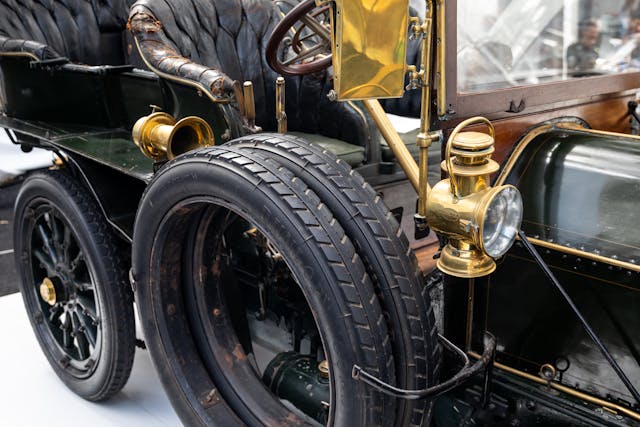

After collecting this new 60 HP model, he immediately entered it into competition, and the car set fastest times at Nice Speed Week and Castlewellan Hill Climb. He also sent it to Ireland to serve as a reserve car for the Mercedes team at the Gordon Bennett Cup, but ultimately it wasn’t used in the race. Later that year, it went to Paris for a new body by J Rothschild et Fils. Called the “Roi de Belges” body because King Leopold II of Belgium had one of his cars fitted with the same coachwork, it still sits on the Mercedes today.
After Harmsworth passed away, his son John inherited the car, and in 1954 he had it cosmetically restored. It then ran several times in the London-to-Brighton Veteran Car Run—the world’s oldest running motoring event. Only vehicles built before January 1, 1905 are allowed to participate. In 1958 it was shipped to Belgium, and drove in the veteran car parade at the Brussels World’s Fair. Then, in the 1960s, conscious of the car’s increasing value, the family put it in the Beaulieu Motor Museum in Southern England. It stayed at the museum, but remained in the family’s ownership, for six decades. “Single family ownership” is a selling point in many an auction catalogue, but 121 years with the same clan is one hell of a long time.
To recap, this is one of the oldest cars in the world called a Mercedes. It was one of the fastest and most exclusive cars of its day. It’s one of five surviving examples of its type. Its first owner was the country’s largest media mogul and its bodywork was fit for a king, literally. It has been owned by the same family since the reign of Edward VII. It retains its original chassis, body, and engine. It is also eligible for London-to-Brighton, one of the world’s most exclusive driving events.

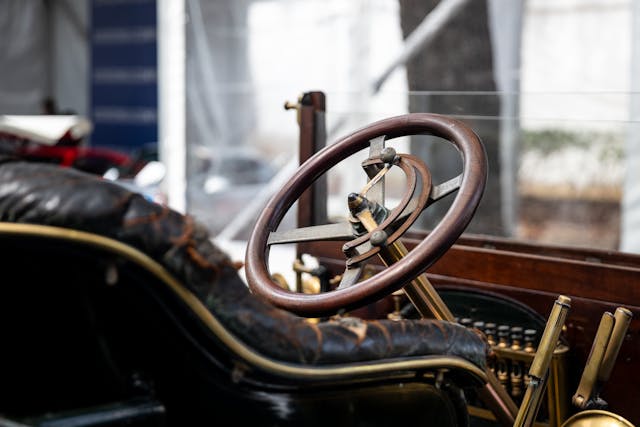
Gooding’s presale estimate was “in excess of $10,000,000,” and bidding for it in Amelia opened at $5M. Bids then came in half a million at a time until stalling at $10M. A new bidder came in at $10.5M, and the number slowly rose to the $11M winning bid (and $12.1M final price, including fees).
Harmsworth’s Mercedes Simplex is now the most expensive pre-1930 automobile to ever sell at auction.
We’ve said it before, and we’ve heard plenty of others say it: no matter what’s happening in the market—be it boom, bust, or flat as a pancake—the best examples of the best cars with the best provenance will always bring top dollar, regardless of age or era. An overused talking point, sure, but universal truths often are.

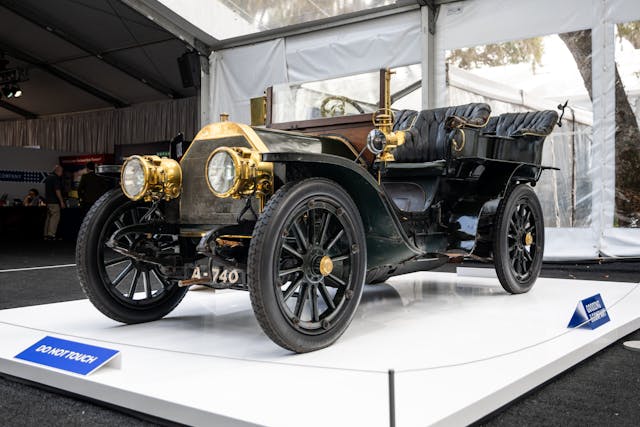









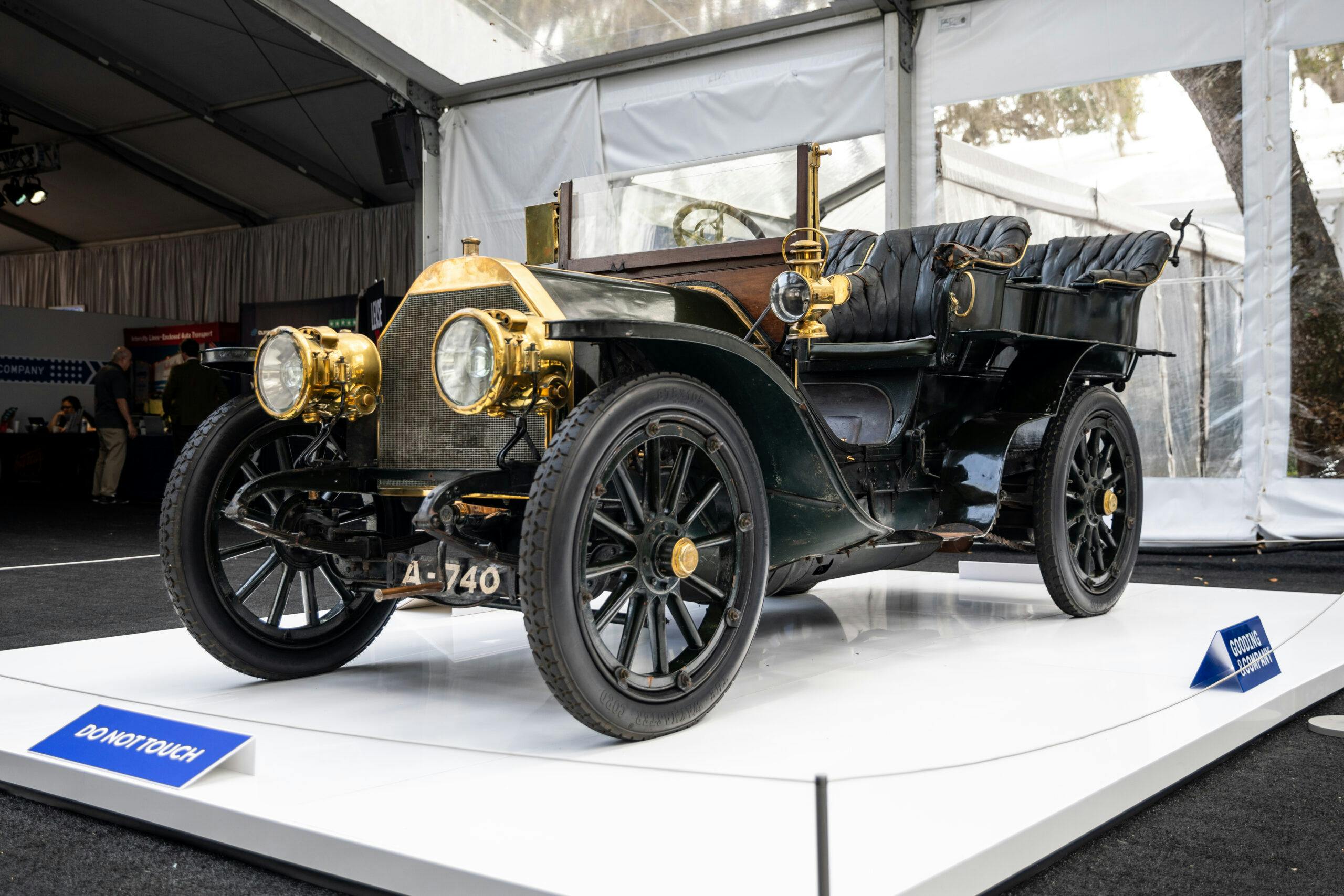
Love this car and the history lesson.
Wow! I presume there is a commission/premium to be attached to the purchase price as well?
20%? = 12.1 + 2.42 = $14.52 million? Amazing.
I believe that price included commission.
Such an amazing car. I’ll forgive the “Best Car” tag line in the title though, that’s a matter of subjective opinions.
It’s an interesting car but…for the money…I’d rather have one of the Mercedes chassis, Maybach zeppelin engined racers that Count Louis Zborowski built. – a.k.a. – ” Oh you pretty Chitty Chitty Bang Bang…We love you!”